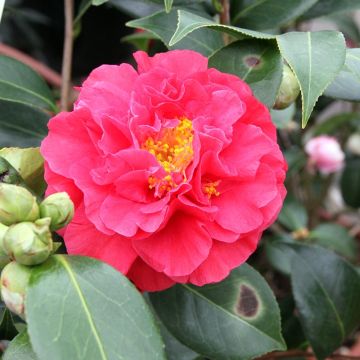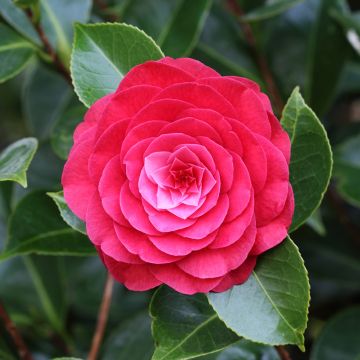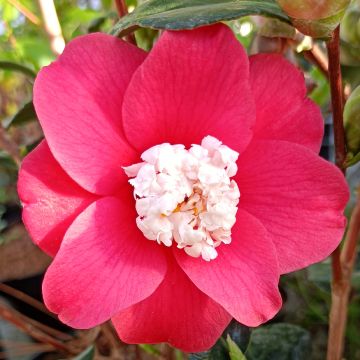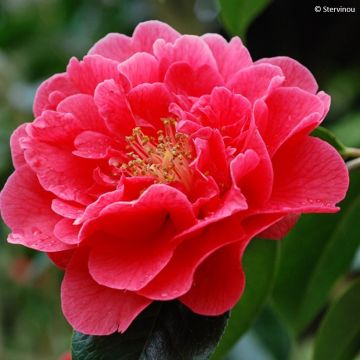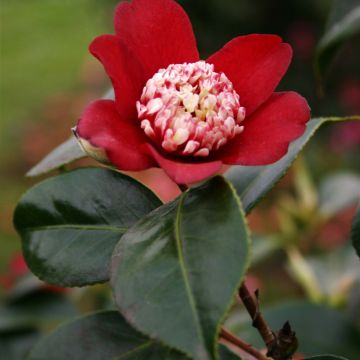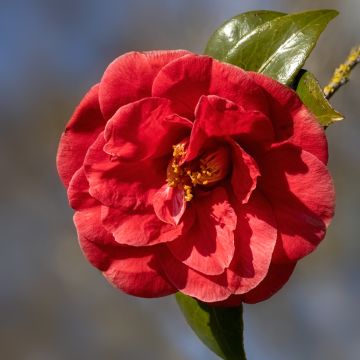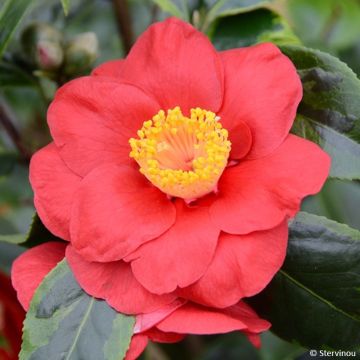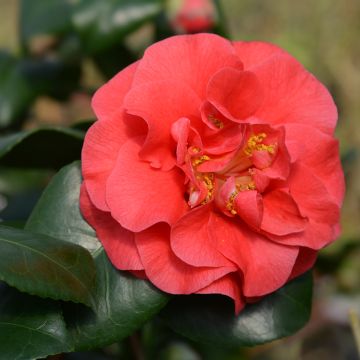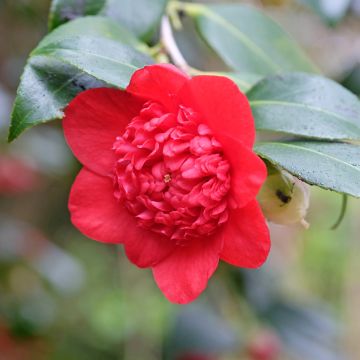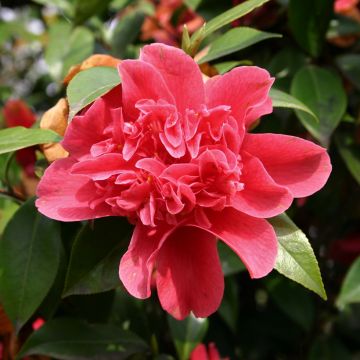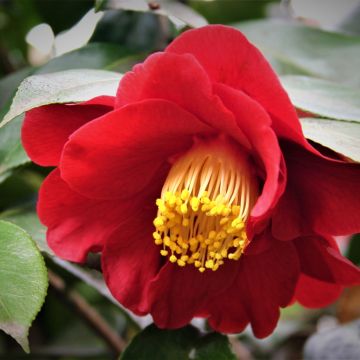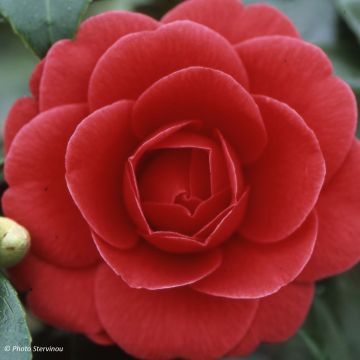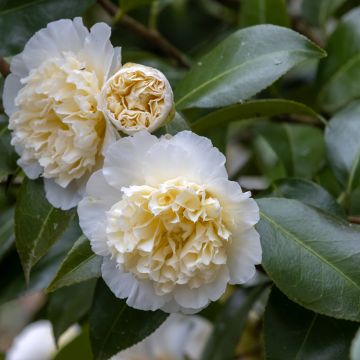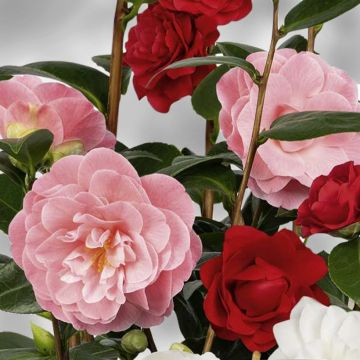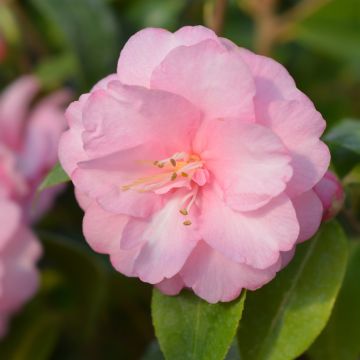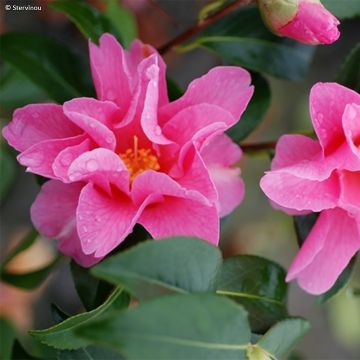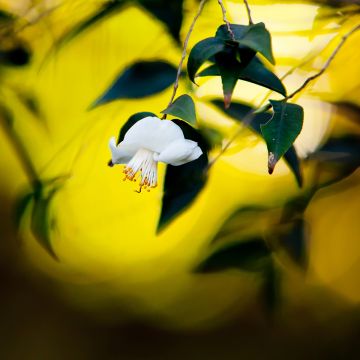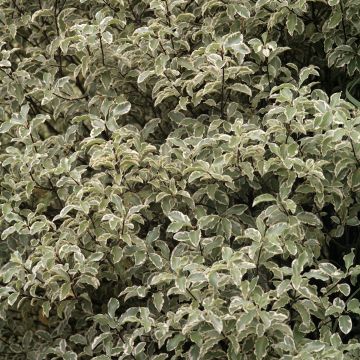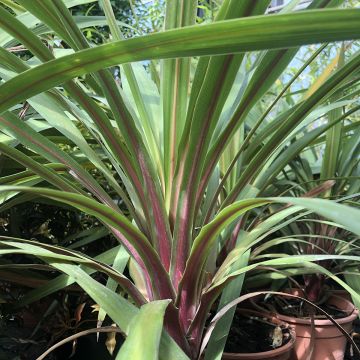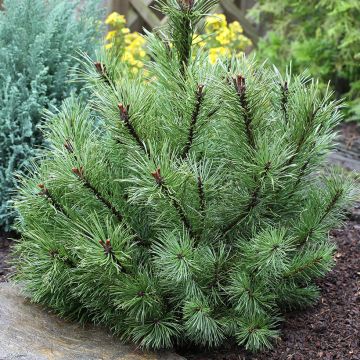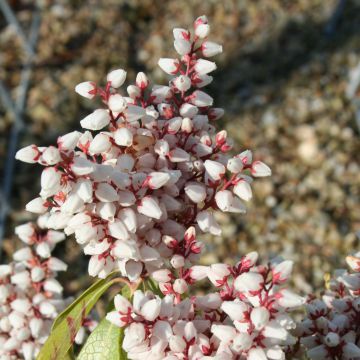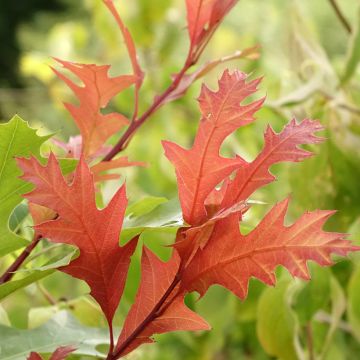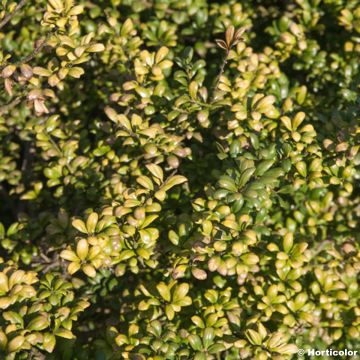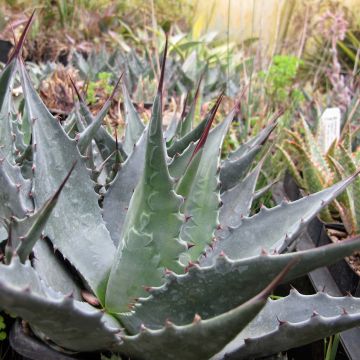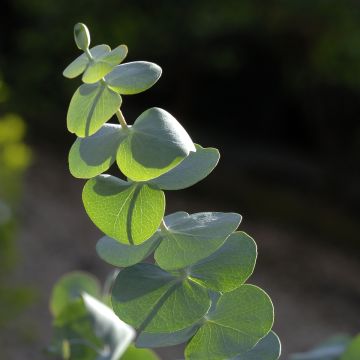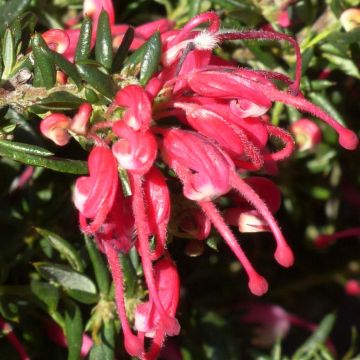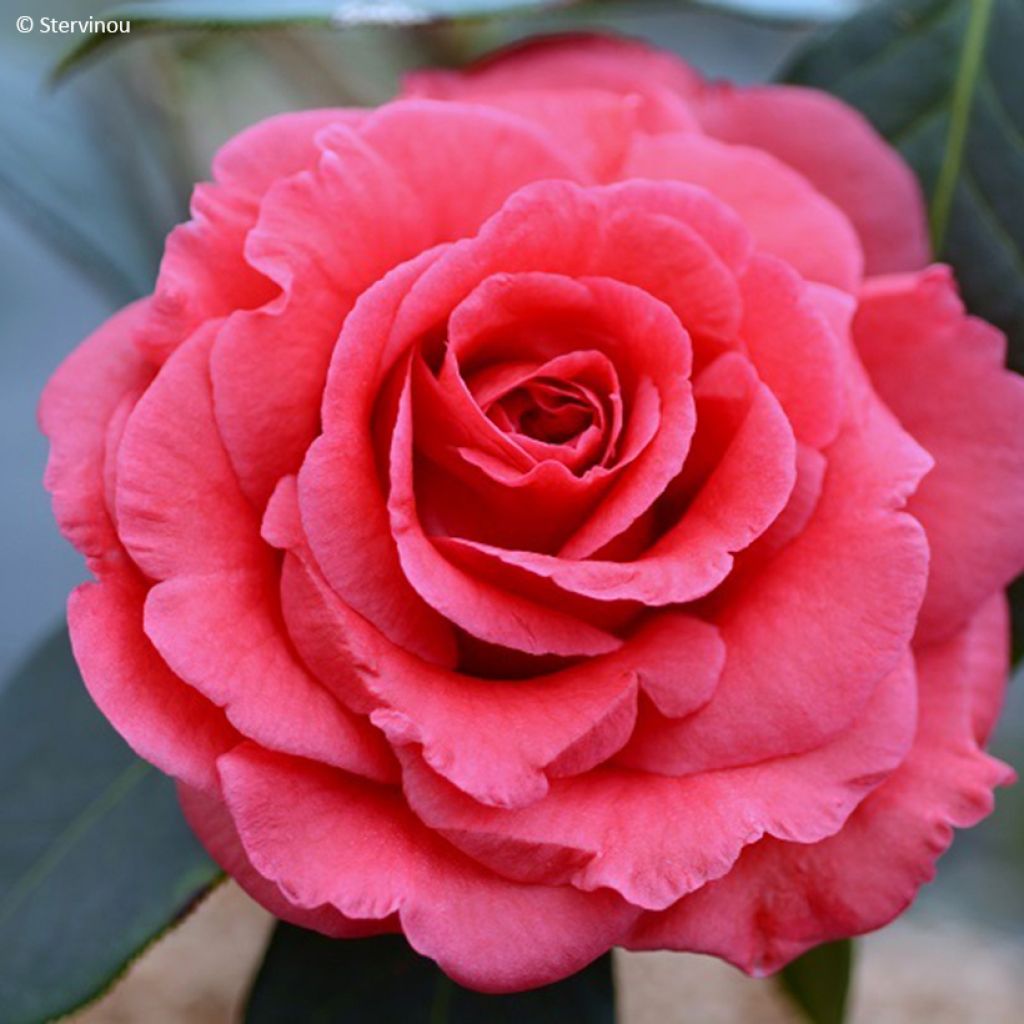

Camellia x reticulata Pagoda
Camellia x reticulata Pagoda
Camellia x reticulata Pagoda
Why not try an alternative variety in stock?
View all →This plant carries a 24 months recovery warranty
More information
We guarantee the quality of our plants for a full growing cycle, and will replace at our expense any plant that fails to recover under normal climatic and planting conditions.
From €5.90 for pickup delivery and €6.90 for home delivery
Express home delivery from €8.90.
Does this plant fit my garden?
Set up your Plantfit profile →
Description
The Retinaculate Camellia 'Pagoda' will delight enthusiasts of spectacular blooms. This beautiful bush with an upright habit is adorned with dark green evergreen foliage that is decorative all year round. From February onwards, it particularly highlights the large flowers in a deep red hue. Well double, they could rival the most beautiful roses in elegance, at a time of year when the latter are still dormant. With a compact size, this variety will find its place among a mass of heather soil plants, in a cool and humid climate, without summer drought or severe winter cold. Elsewhere, container cultivation will provide protection during the cold season.
The Camellia belongs to the Theaceae family, which includes only 10 to 20 genera depending on classifications. Some are ornamental, such as Stewartia whose flowers strongly resemble simple Camellias, and one species has major cultural and economic importance. This is the Camellia sinensis, whose leaves are used to make teas, of which there are said to be as many varieties as wines. The Camellia genus comprises 100 to 250 botanical species, and a multitude of horticultural varieties, especially Camellia japonica, very popular in the first half of the 19th century in Europe and a favorite of plant breeders and enthusiasts. Camellia reticulata, on the other hand, is renowned for the size of its flowers, the largest in the genus. It grows naturally in southern China, in the Yunnan province with a humid subtropical climate. It is found in mountainous areas up to an altitude of 3000 m, where it can grow into a small tree of 10 m or more in height.
Its 'Pagoda' variety has a much more modest development and is compatible with the smallest of our gardens. Growing rather slowly, this bush will reach approximately 1.50 m in height and 1 m in width after 10 years when planted in the ground. At maturity, it generally reaches around 2.10 m in height with a spread of 1.40 m. Its habit is erect like most C. reticulata, with upright branches that gradually widen over time. Its evergreen foliage is characteristic of the species, elongated elliptical in shape, the leaves measure about 12 cm in length by 5 cm in width. Their edges are finely toothed, and their surface is glossy, almost shiny. Their dark green colour allows the bright flowering to stand out even more intensely. From February, the floral buds open to reveal large corollas about a dozen centimetres in diameter. Very double, the flowers consist of numerous petals in an intense red colour, resembling some roses with a full heart. At full maturity, the flowers eventually reveal a centre of yellow stamens, creating a lovely colour contrast. Blooming between February and late March, early April, these magnificent flowers create a sensation in the garden, attracting all eyes to them.
The Camellia reticulata 'Pagoda' is an excellent choice in Atlantic regions, where it will herald spring with its vibrant flowering. Pair it with other plants with similar requirements to create a quality flower bed. The Sarcococca 'Winter Gem' will make an excellent foreground with its lanceolate leaves of a glossy green. Above all, its winter flowering even earlier than your Camellia will bring an olfactory dimension to your flower bed, spreading a very pleasant sweet scent. Fragrant Rhododendrons and Azaleas will brilliantly take over in spring, offering a variety of colours and dimensions that will allow you to add volume to your scene. And to celebrate summer, there's nothing like choosing from the vast range of Hydrangeas, with flat, round, or conical flower heads in white, blue, pink, red, and all imaginable intermediate colours.
Report an error about the product description
Plant habit
Flowering
Foliage
Botanical data
Camellia
x reticulata
Pagoda
Theaceae
Cultivar or hybrid
Other Traditional Camellia
Planting and care
The Camellia reticulata 'Pagoda' accepts full sun in a favourable climate, such as in the northern Atlantic regions, but it is in partial shade, protected from the burning sun and in a sheltered position from strong winds that it will give its best, especially in sunnier areas. Plant it in a cool, humus-bearing, acidic, and well-drained soil. The shrub should not be planted too deeply, the top of the root ball should be covered with 3 cm of soil. In winter, cover it with a 5 to 7 cm thick mulch composed of leaf compost and crushed bark. Beware of late frosts that can damage the flowers and buds. During dry periods, water the shrub to prevent the dropping of flower buds. It is recommended to plant the camellia preferably in autumn to promote good rooting and better flowering from the first year. Possible diseases include chlorosis caused by excess limestone, brown spots caused by burns on leaves exposed to the south, sooty mould, scale insects, and vine-plant beetles.
Pruning is not necessary, it will be done if necessary just after flowering, before the new spring shoots emerge, and sparingly. Most camellia hybrids do not recover from too severe pruning.
Planting period
Intended location
Care
This item has not been reviewed yet - be the first to leave a review about it.
Evergreen shrubs
Haven't found what you were looking for?
Hardiness is the lowest winter temperature a plant can endure without suffering serious damage or even dying. However, hardiness is affected by location (a sheltered area, such as a patio), protection (winter cover) and soil type (hardiness is improved by well-drained soil).

Photo Sharing Terms & Conditions
In order to encourage gardeners to interact and share their experiences, Promesse de fleurs offers various media enabling content to be uploaded onto its Site - in particular via the ‘Photo sharing’ module.
The User agrees to refrain from:
- Posting any content that is illegal, prejudicial, insulting, racist, inciteful to hatred, revisionist, contrary to public decency, that infringes on privacy or on the privacy rights of third parties, in particular the publicity rights of persons and goods, intellectual property rights, or the right to privacy.
- Submitting content on behalf of a third party;
- Impersonate the identity of a third party and/or publish any personal information about a third party;
In general, the User undertakes to refrain from any unethical behaviour.
All Content (in particular text, comments, files, images, photos, videos, creative works, etc.), which may be subject to property or intellectual property rights, image or other private rights, shall remain the property of the User, subject to the limited rights granted by the terms of the licence granted by Promesse de fleurs as stated below. Users are at liberty to publish or not to publish such Content on the Site, notably via the ‘Photo Sharing’ facility, and accept that this Content shall be made public and freely accessible, notably on the Internet.
Users further acknowledge, undertake to have ,and guarantee that they hold all necessary rights and permissions to publish such material on the Site, in particular with regard to the legislation in force pertaining to any privacy, property, intellectual property, image, or contractual rights, or rights of any other nature. By publishing such Content on the Site, Users acknowledge accepting full liability as publishers of the Content within the meaning of the law, and grant Promesse de fleurs, free of charge, an inclusive, worldwide licence for the said Content for the entire duration of its publication, including all reproduction, representation, up/downloading, displaying, performing, transmission, and storage rights.
Users also grant permission for their name to be linked to the Content and accept that this link may not always be made available.
By engaging in posting material, Users consent to their Content becoming automatically accessible on the Internet, in particular on other sites and/or blogs and/or web pages of the Promesse de fleurs site, including in particular social pages and the Promesse de fleurs catalogue.
Users may secure the removal of entrusted content free of charge by issuing a simple request via our contact form.
The flowering period indicated on our website applies to countries and regions located in USDA zone 8 (France, the United Kingdom, Ireland, the Netherlands, etc.)
It will vary according to where you live:
- In zones 9 to 10 (Italy, Spain, Greece, etc.), flowering will occur about 2 to 4 weeks earlier.
- In zones 6 to 7 (Germany, Poland, Slovenia, and lower mountainous regions), flowering will be delayed by 2 to 3 weeks.
- In zone 5 (Central Europe, Scandinavia), blooming will be delayed by 3 to 5 weeks.
In temperate climates, pruning of spring-flowering shrubs (forsythia, spireas, etc.) should be done just after flowering.
Pruning of summer-flowering shrubs (Indian Lilac, Perovskia, etc.) can be done in winter or spring.
In cold regions as well as with frost-sensitive plants, avoid pruning too early when severe frosts may still occur.
The planting period indicated on our website applies to countries and regions located in USDA zone 8 (France, United Kingdom, Ireland, Netherlands).
It will vary according to where you live:
- In Mediterranean zones (Marseille, Madrid, Milan, etc.), autumn and winter are the best planting periods.
- In continental zones (Strasbourg, Munich, Vienna, etc.), delay planting by 2 to 3 weeks in spring and bring it forward by 2 to 4 weeks in autumn.
- In mountainous regions (the Alps, Pyrenees, Carpathians, etc.), it is best to plant in late spring (May-June) or late summer (August-September).
The harvesting period indicated on our website applies to countries and regions in USDA zone 8 (France, England, Ireland, the Netherlands).
In colder areas (Scandinavia, Poland, Austria...) fruit and vegetable harvests are likely to be delayed by 3-4 weeks.
In warmer areas (Italy, Spain, Greece, etc.), harvesting will probably take place earlier, depending on weather conditions.
The sowing periods indicated on our website apply to countries and regions within USDA Zone 8 (France, UK, Ireland, Netherlands).
In colder areas (Scandinavia, Poland, Austria...), delay any outdoor sowing by 3-4 weeks, or sow under glass.
In warmer climes (Italy, Spain, Greece, etc.), bring outdoor sowing forward by a few weeks.

































